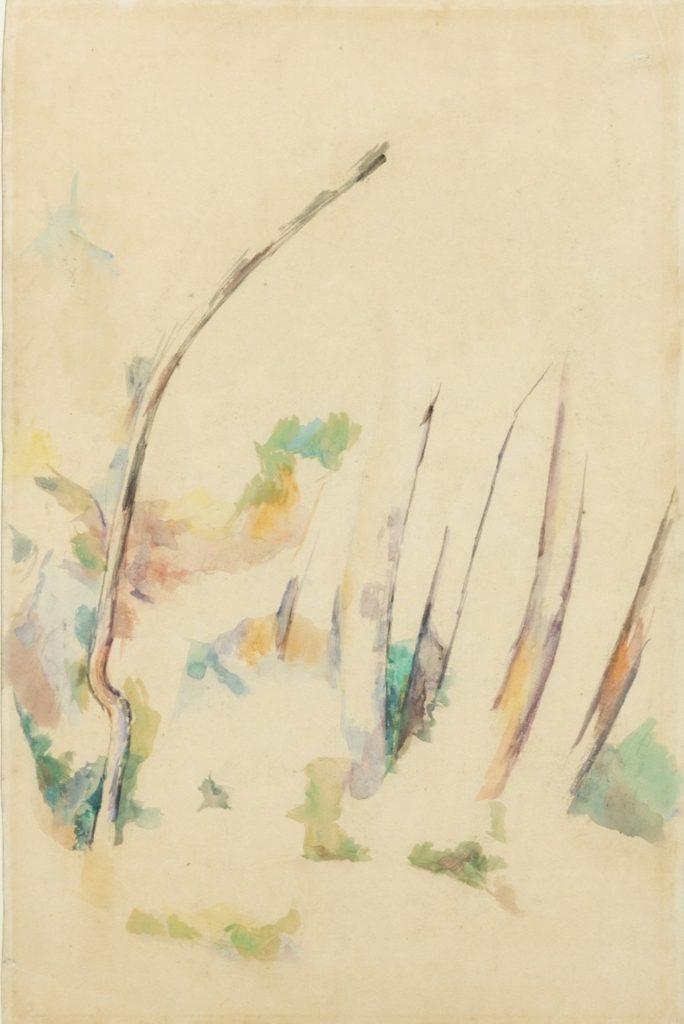(MENAFN- USA Art News) After years of legal tussles, there are sure to be fireworks at Sotheby's next month when a group of top-flight Impressionist paintings that were restituted to the heirs of legendary dealer Ambroise Vollard come on the block at the house's major evening sale in New York.
The four works, including two paintings by Pierre-Auguste Renoir- (1883) and (1908)-along with Paul Cézanne's (1890-1892) and Paul Gauguin's (1885), will be offered on May 16.
The overall low/high estimate for the group is $11.5 million to $17.35 million. The works were shown at Sotheby's Paris last week.
The group is led by the Gauguin, which Sotheby's calls one of his most significant still lifes, and is estimated at $10 million to $15 million. Further adding to its provenance appeal, it hung for more than three decades at the Musée d'Orsay.
According to a statement from Sotheby's, 1885 was when the artist began to pursue his art full-time, moving away from the naturalism of the Impressionist movement and beginning to experiment with vibrant colors. His explorations during this period would eventually form the basis of the Post-Impressionist movement, which caught the eye of fellow artist Van Gogh. A few years later, he invited Gauguin to join him in Arles, in the South of France. It was around the same time that Vollard began to see potential in Gauguin and became a key player in the development of his career, arranging major Gauguin exhibitions after the artist had departed for Tahiti in the 1890s.
The record for a Gauguin at auction is $105.7 million paid for (1899), an oil on burlap that was sold at Christie's New York last fall as part of the storied paul allen collection . In 2015, a Gauguin painting, , or (1892), that was owned by a Swiss collector, was reportedly sold privately to a Qatar museum for $300 million.

Pierre-Auguste Renoir, Paysage de bord de mer (c. 1884). Photo courtesy Sotheby's.
Elsewhere in the upcoming Sotheby's offerings are: the Renoir landscape, , estimated at $1 million to $1.5 million, and created while the artist was at the height of his independence in 1884; a red chalk by Renoir depicting the Greek myth, the Judgement of Paris, and titled (c. 1915), which is estimated at $300,000 to $500,000; and a watercolor and pencil work on paper by Cézanne titled (c. 1882–84), which is estimated at $250,000 to $350,000.
Sotheby's said the display at its Paris gallery after years of legal wrangling brought the storied history of the works“full circle” in the development of the shared understanding of Impressionist and Modern art.

Pierre-August Renoir, Judgement of Paris or Le Jugement de Pâris (c. 1915). Photo courtesy Sotheby's.
Vollard was instrumental in building the reputations of the most significant artists of the time, including Pablo Picasso, Paul Cézanne, Henri Matisse, Gauguin, Van Gogh, and others. Not only did he stage the first solo shows for many of these artists, but also supported them throughout their careers, establishing their legacies by publishing prints and illustrated books of their work, and ensuring their works were placed in major institutional and private collections.
Vollard left behind some 6,000 artworks when he died in a car crash in 1939. As the Nazis invaded France the following year, his brother, Lucien Vollard, along two French art experts, Étienne Bignou and Martin Fabiani, allegedly stole numerous paintings from the dealer's inheritance.
Some of the artworks were sold to members of the Nazi party, with whom Bignou and Fabiani had close ties; others were offered to German museums and dealers.

Paul Cézanne, Sous-bois (1882–84). Photo courtesy Sotheby's.
In 2013, the Vollard heirs filed to have a total of seven artworks returned, including the four paintings being sold next month. The French state declined the request, claiming that there was not sufficient proof that the pieces were stolen.
Eventually the case made its way through the French court system, and in May 2022, a judge ruled that the four artworks by Cézanne, Gauguin, and Renoir were the property of Vollard when he died and therefore should belong to his heirs. The ruling was then upheld in a French High Court last November.